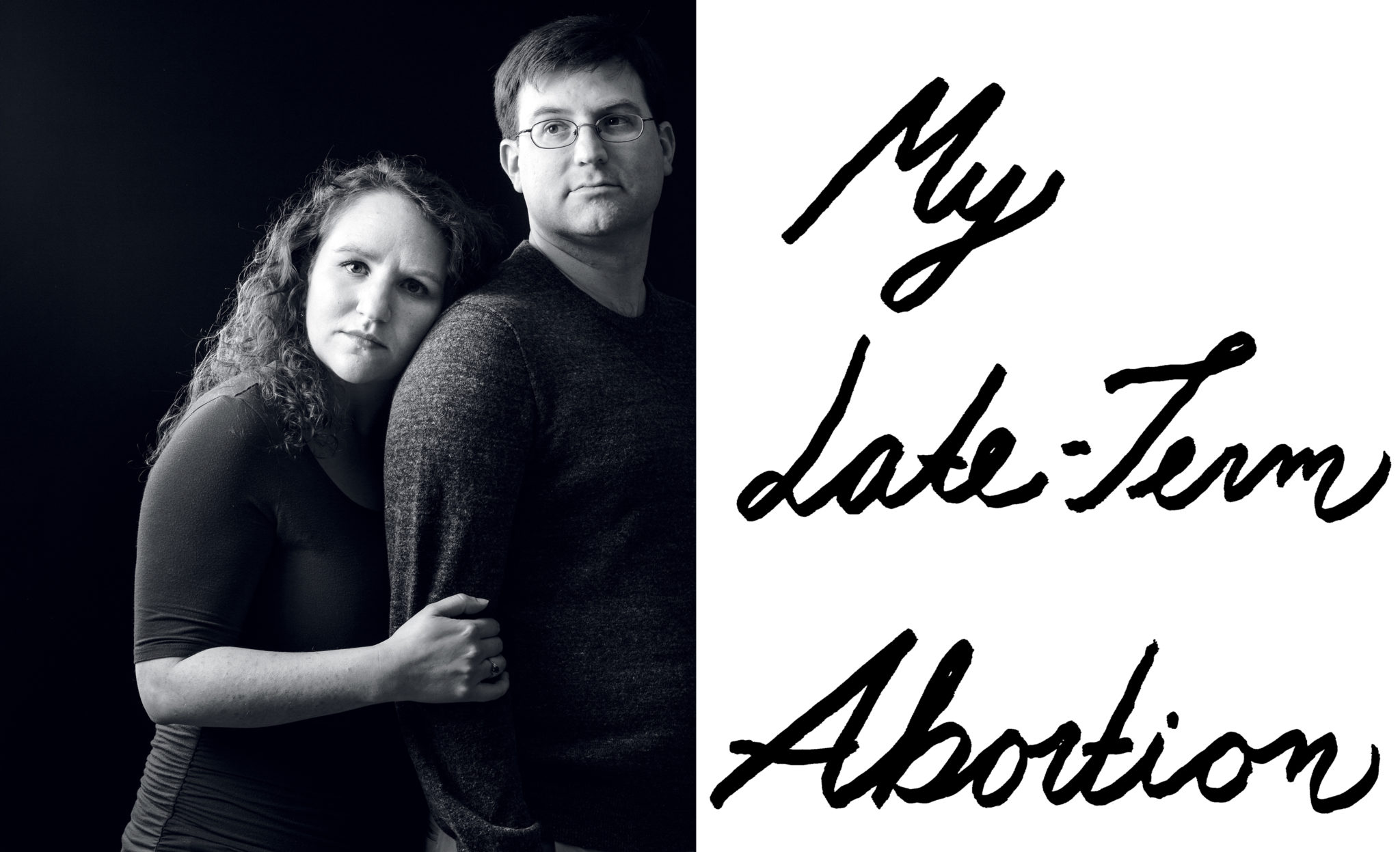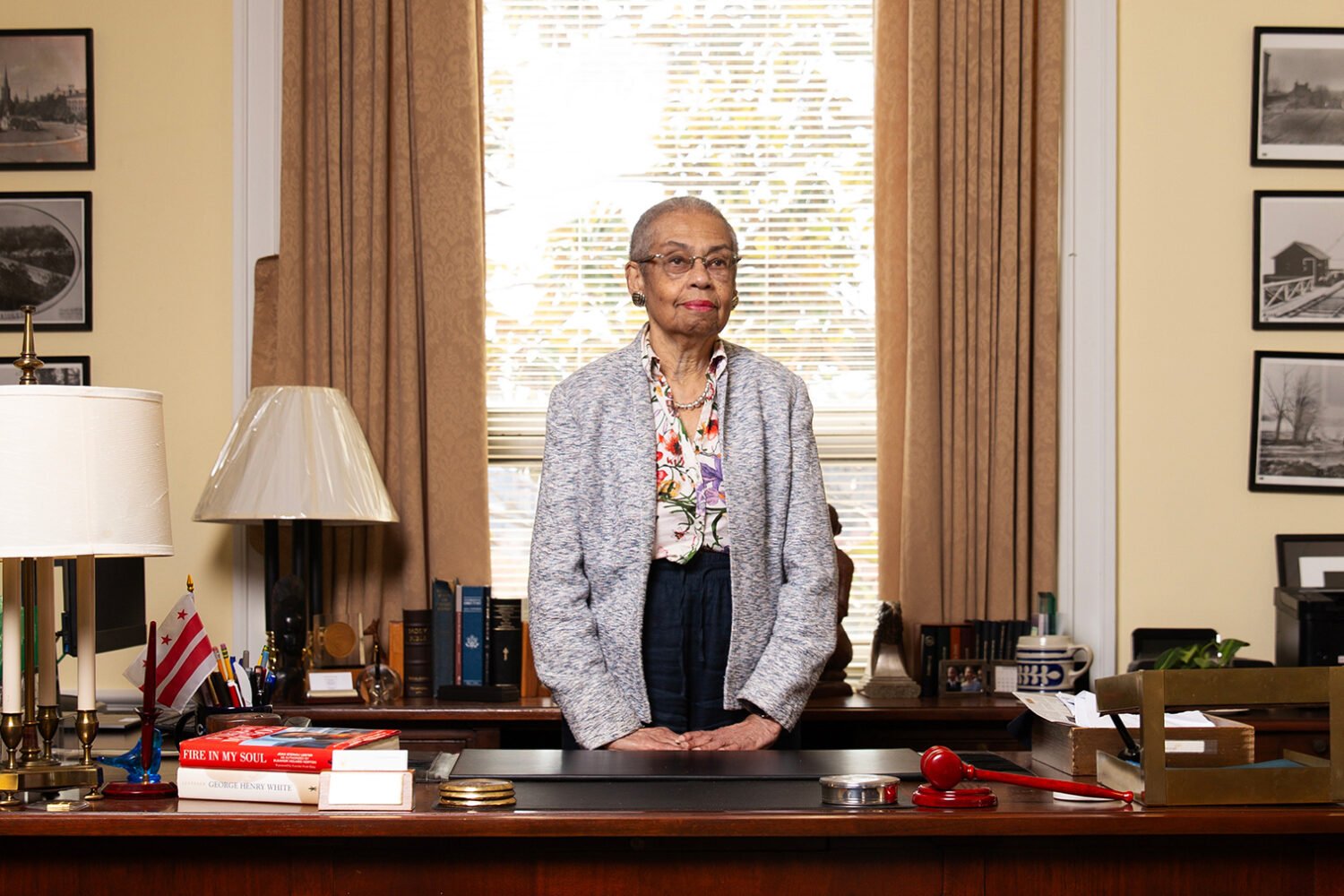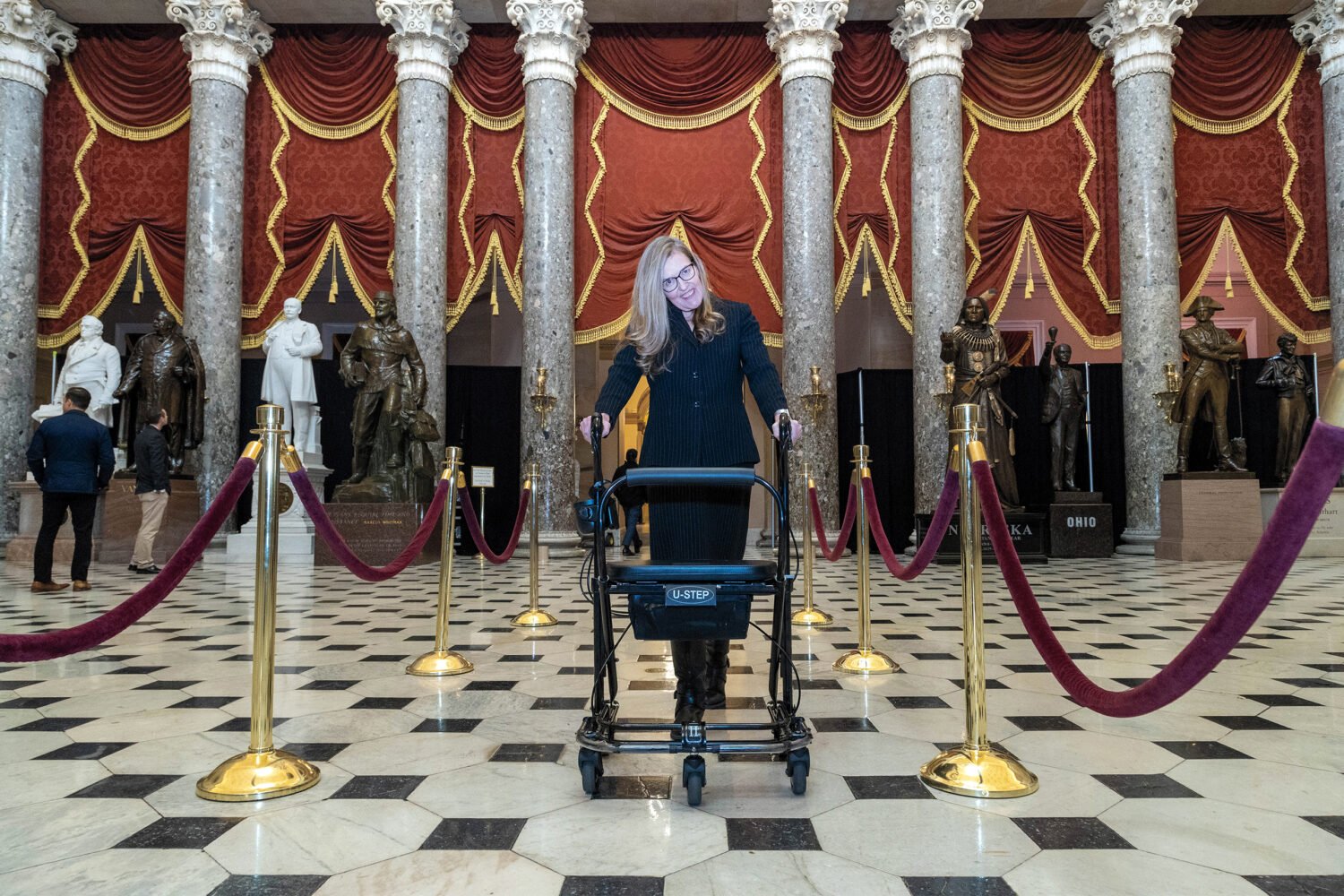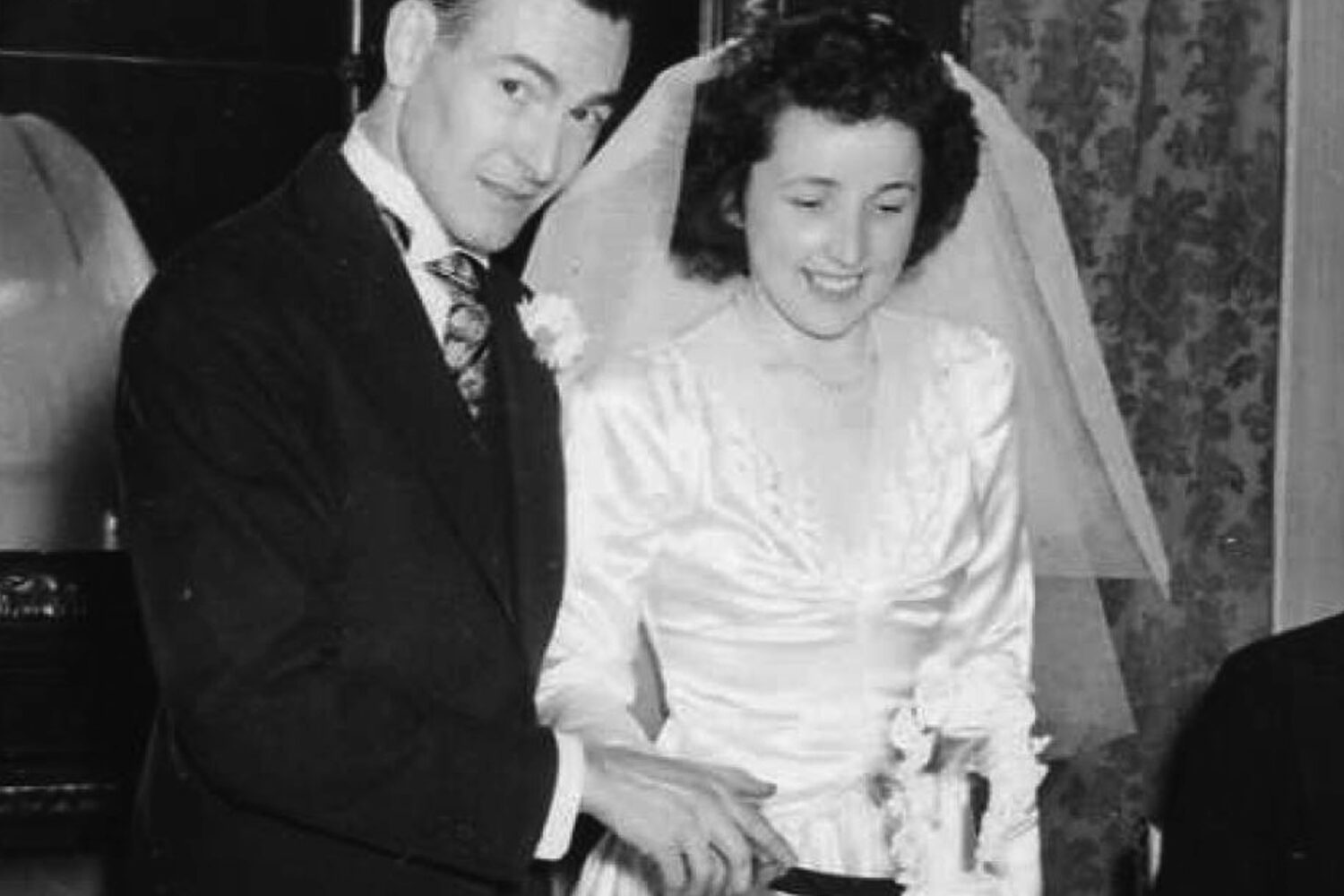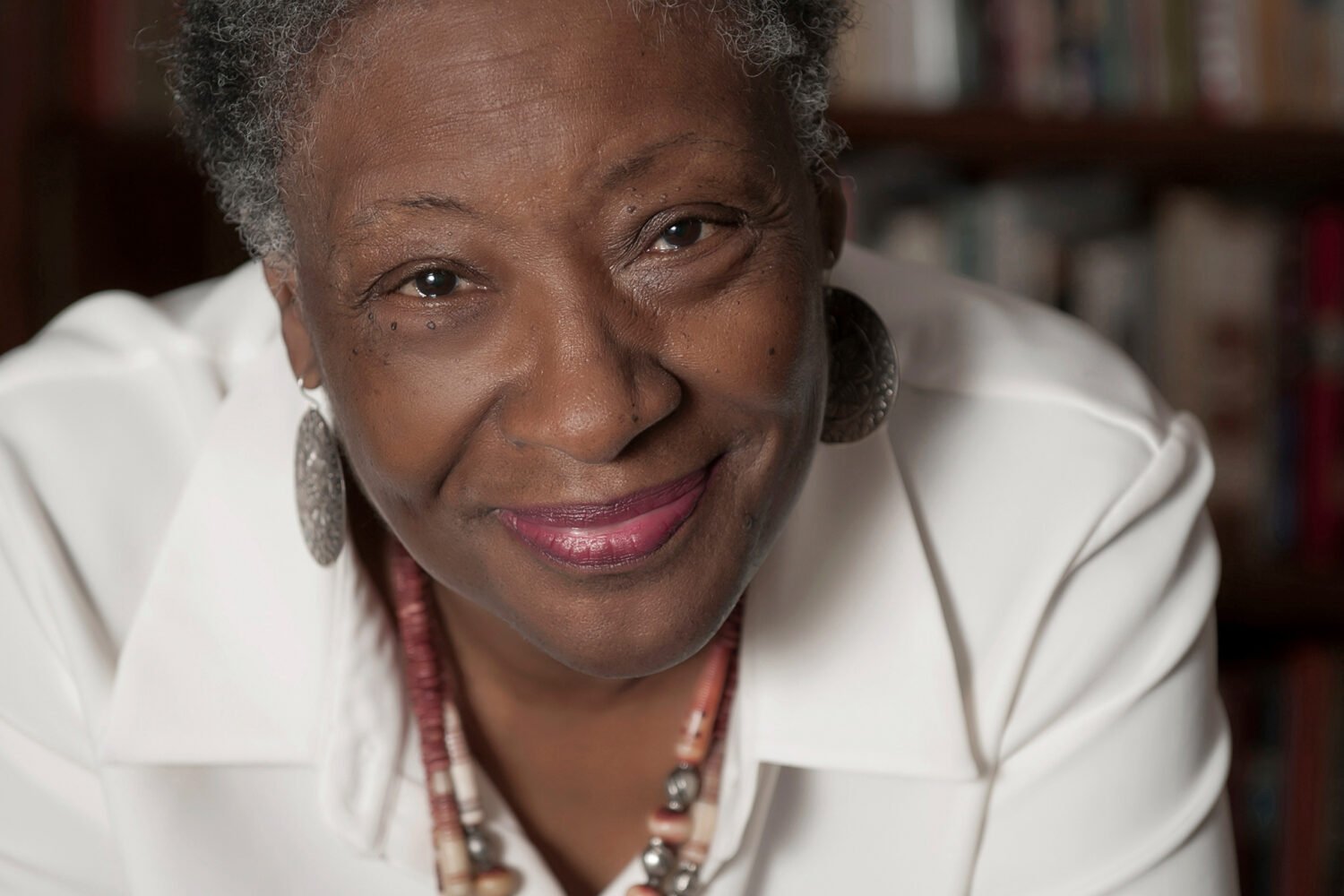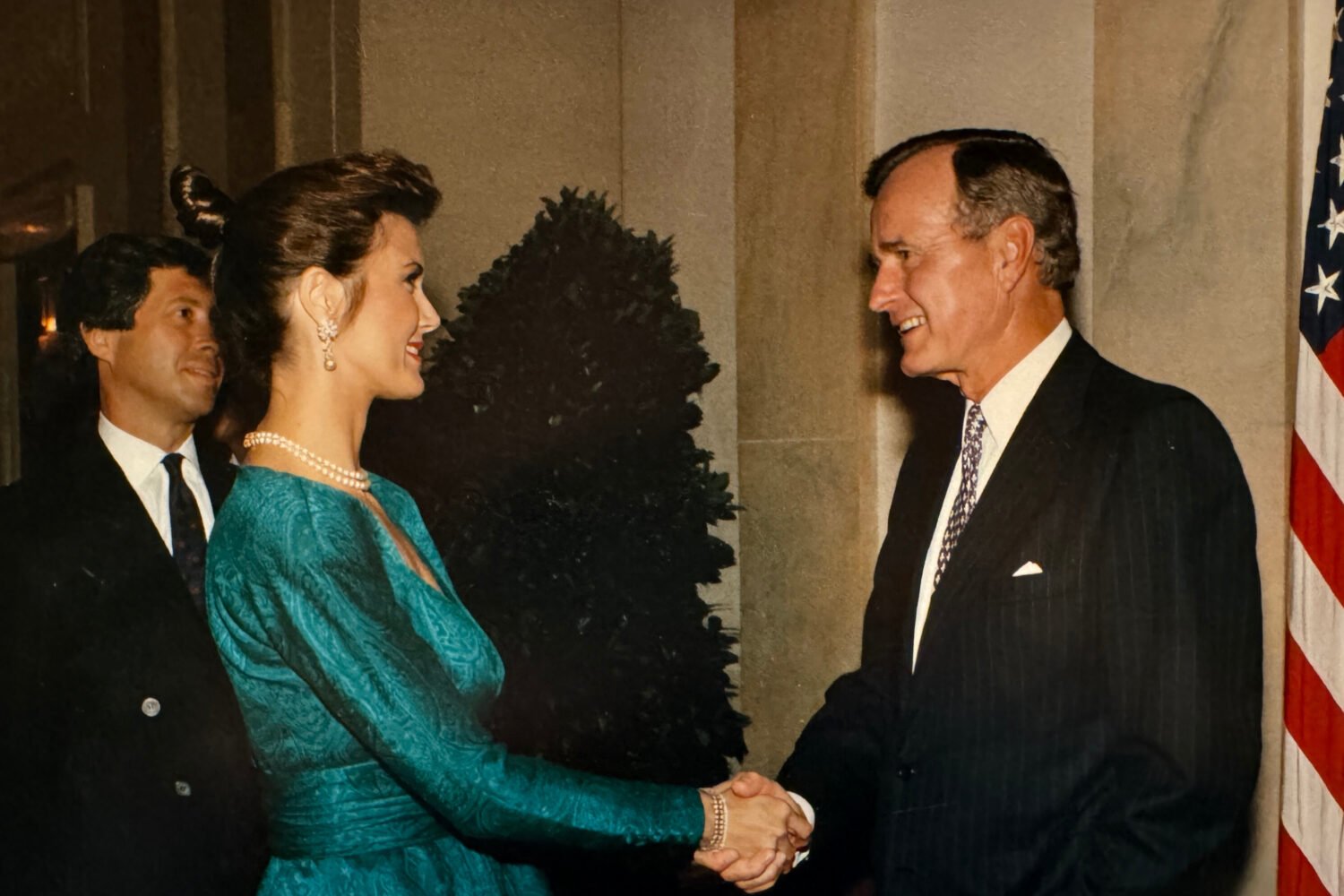When I woke up the morning after my abortion, I still looked like I was 20 weeks pregnant. I felt as if I hadn’t slept, and my eyes were red and baggy. I put on maternity leggings, a sweatshirt, and a sports bra to help prevent my milk from coming in and went downstairs to e-mail friends and family.
Before October 4, 2016, my life was lovely, uncomplicated, and quintessentially Washington. I grew up in Northern Virginia, surrounded by politics and politicians, with parents who hosted cocktail parties and political fundraisers and taught me to work a room from a young age. After college, I worked on the Hill. I then went to law school, where I fell in love with litigation, combining my analytical skills and my ability to have a conversation with a brick wall. By 32, I was a family-law attorney at a small, elite local firm.
Eric, my husband—an attorney in financial-services regulation—is my perfect foil, the introvert to my extrovert. He has seen a few too many episodes of Gilmore Girls, and I more boxing matches than I’d care to admit. Soon after our engagement, we bought a cavapoo with mismatched ears named Merlin and, before our wedding, a five-bedroom house in Bethesda. One of the selling points had been the adorable Jack-and-Jill bathroom between the two “kid” rooms.
We learned I was pregnant on Father’s Day. When I first looked at the test, it seemed there was only one line, a negative result. Then I checked again, and there it was—a lighter but clearly visible second pink line. My often-stoic husband insisted we take a picture.
The pregnancy started off well: minimal morning sickness, strong heartbeat at the seven-week ultrasound, and I was gaining weight at a healthy pace. At night, Eric read Harry Potter books out loud so he could connect with the baby. He put up with the mood swings, which included me crying, twice, outside a doughnut shop. I complained about my sore boobs, passed a lot of wind, and had to pee all the time. I loved it.
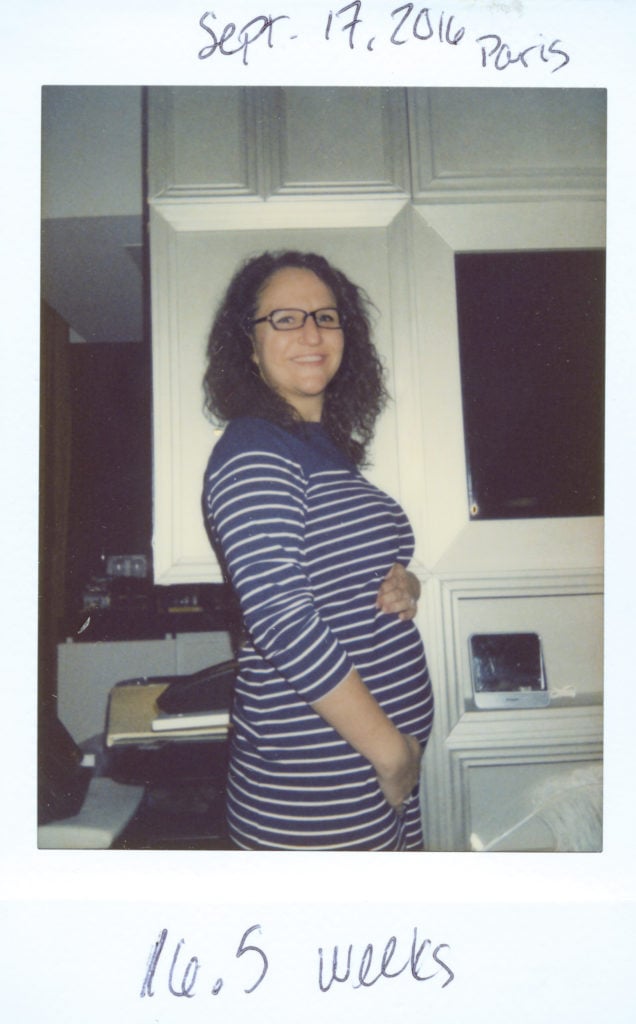
At 19 weeks and one day, we went to our fetal anatomy scan at our ob-gyn in DC. I knew that an ultrasound technician would measure the baby’s head and limbs, spine and organs, to be sure everything was developing correctly. We had booked a table at Woodmont Grill for dinner that night to celebrate—by the end of the exam we’d also learn our child’s gender.
About halfway through all the wanding and picture-taking, I asked, “Everything looking good?” The technician paused, then responded, “Well, I see something. It looks like a diaphragmatic hernia, but I’ll have the doctor come in and explain it.”
A diaphragmatic hernia? My heart raced. A hernia isn’t that serious, right?
Soon we found ourselves watching my ob-gyn take a pencil to the hygienic paper of the examination table and draw a diagram of our child’s condition: congenital diaphragmatic hernia (CDH). She explained how the diaphragm doesn’t fully form, how the organs that are supposed to float below it instead migrate up into the chest cavity, and finally, how they crowd the lungs and inhibit them from developing.
What she wasn’t sure of was the severity. That would require more testing. If it turned out to be mild, the baby would be intubated at birth, then undergo surgery, followed by a long stay in the neonatal intensive-care unit. At one point, I asked if this was a “normal” sort of surgery for babies, like a cleft palate. She looked at me and said, “No, absolutely not.” She then informed me that under Maryland law, I’d likely have until 23 weeks and six days to terminate my pregnancy. The words didn’t even register.
That night, I went online. CDH is a 1-in-2,500 occurrence, and I wanted to see what was going on with my child. I found diagrams showing what a healthy baby looked like versus a baby with a diaphragmatic hernia. The drawings always showed the most severe cases, with almost all of the organs up where the lungs were supposed to be. I cried looking at them—guttural heaves, the kind that shake your every inch. But our doctors were hopeful it was a mild case. Eric went back to work the next morning.
Three days later, a Friday, we got to Children’s National at 7 am. As we walked the hallways, nearly empty at that hour, I saw plaques commemorating donors and started sobbing again. I wanted to be one of those families that gave money to Children’s because it saved their baby’s life. I wanted to go back to being exactly 19 weeks pregnant.
The day’s docket was packed: an MRI, a sonogram, an echocardiogram for the baby, a consult with a genetic counselor, a tour of the NICU, and last, a visit with the surgeon. Nearly eight hours of shuffling between exam tables and waiting rooms. Eric got me chicken fingers from the cafeteria and watched as I played Candy Crush Saga.
After the echocardiogram, the cardiologist told us our meeting wouldn’t take long. Eric looked confused. I told him, “It’s a short meeting because there’s nothing to say.” The cardiologist confirmed—the baby’s heart looked good.
At 2 pm, we entered an unadorned room for the prognosis. My hands shook and my teeth chattered. The surgeon looked so young. When she pulled out two drawings of a baby’s anatomy, I thought, I recognize those. They were the side-by-sides of a healthy baby and another with severe CDH that I had seen online. Then it hit me. She was showing us a picture of a normal fetus and a picture of our child.
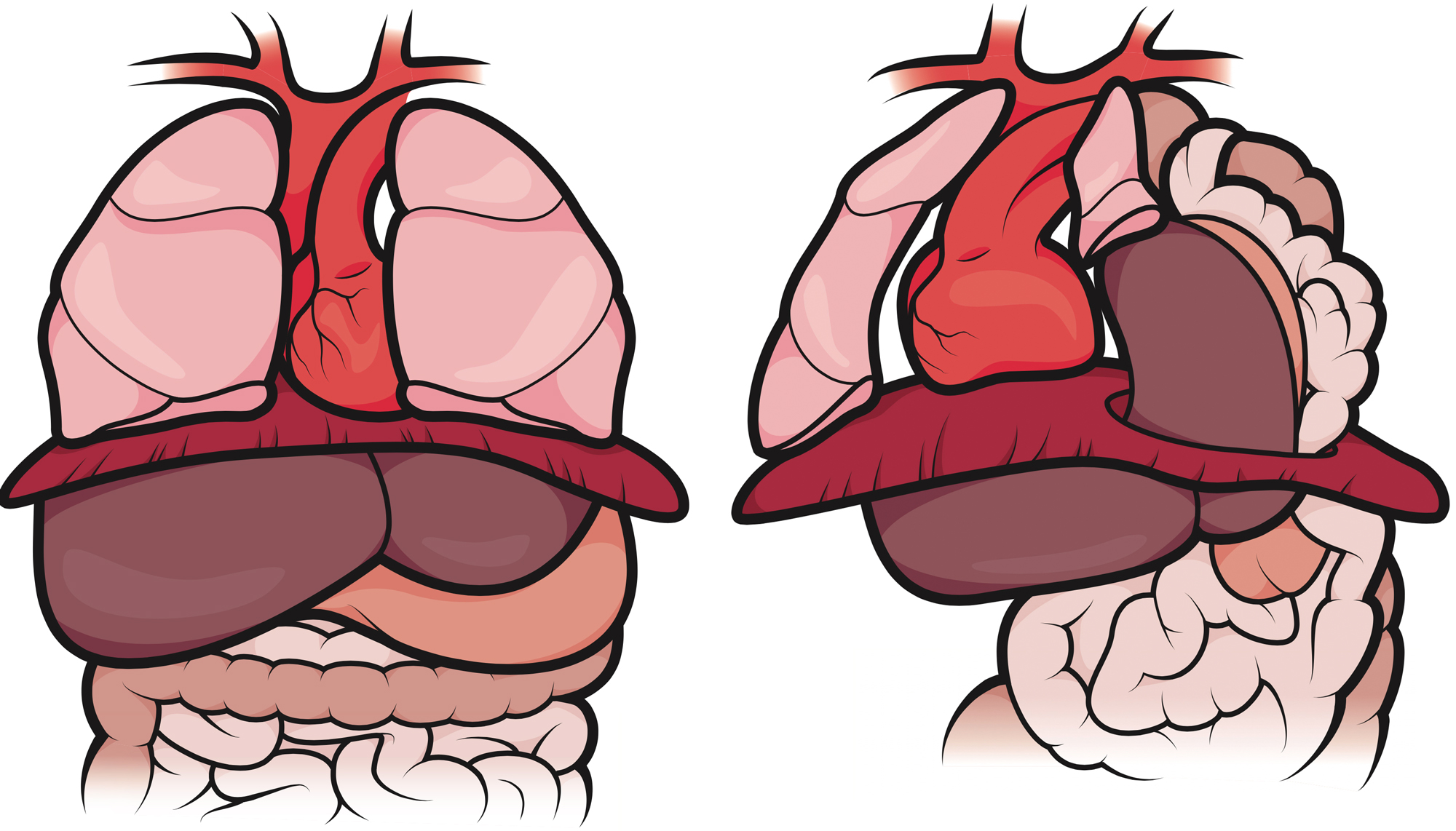
The surgeon explained that so many of the organs had migrated upward that the left lung had essentially failed to develop, and there was only a sliver of a right lung. Our baby might need heart-lung bypass immediately after being delivered and would require extensive surgery, which could bring complications and maybe more surgery—all of this with a very low chance of survival. But there was also a decent chance our baby would never actually gain enough strength for the surgery, so we’d have to decide if it should be attempted at all. Our other option would be to forgo surgery altogether. We’d then have to decide how long to keep the baby on heart-lung bypass and when to turn it off so our child could die naturally.
I thought, I cannot do this. I thought, What if my husband doesn’t agree with me?
We asked to have a minute alone. I turned to Eric and saw his eyes well up. I knew he knew. We could not spend the next four months watching my belly grow, feeling our baby kick, listening to friends, family, even strangers congratulate us. We could not spend the next four months deciding whether to decorate a room when in all probability our baby would never sleep in it.
Halfway through the ultrasound, I asked, ‘Everything looking good?’ The technician paused: ‘Well, I see something.’
We wanted to take the weekend to think about everything but told the surgeon we were leaning toward terminating. That was a reasonable decision, she said.
We took an Uber home and held hands on the ride. As we pulled up to our house, I saw my 73-year-old mom out front, standing there with Merlin and my favorite comfort food as a kid, a Coke Slurpee.
The weekend was a blur of Tom Hanks movies, broken up with wandering around the Air and Space Museum’s Udvar-Hazy Center in Chantilly. On Saturday, we drove to pick up pho for dinner. Eric went inside while I stayed behind with Merlin on my lap. I felt a kick—my baby boy. It wasn’t the first kick, but it was the first time I knew it was him kicking.
Eric returned, food in hand, to find me crumpled in half. We had to terminate the pregnancy.
By Monday morning, I was officially 20 weeks pregnant. We met with our high-risk ob-gyn to figure out next steps. He said he had reviewed everything and conferred with a colleague at Johns Hopkins who told him that keeping our baby alive “would be an adventure.” It was confirmation I didn’t need to hear.
Our next decision—how to abort—was easier to make. At 20 weeks pregnant, you can either induce labor or do a dilation and evacuation (D&E) with general anesthesia. The D&E would take longer—one day of a medication working on my cervix to dilate it, then the “evacuation” on the second day. I knew I couldn’t go through the agony of labor to watch my unviable child be delivered. I scheduled the D&E.
Part of me was relieved to land the appointment, especially knowing I had to wait only 48 hours to start the process. But I still had to get through those two days. I went online again in search of other women’s stories. It was strangely comforting to see some that seemed even more horrific than mine. I read about women who started drinking as soon as they decided to terminate, in order to numb the pain and recognize the end of the pregnancy. But I couldn’t look at alcohol.
On Wednesday, we went in for the first half of the procedure. Our doctor was simultaneously warm and blunt. I asked her if I would get narcotics, because I’d read about women being told they could take only ibuprofen and that the dilation was incredibly painful. “I will give you whatever you need, and don’t be afraid to take it,” my doctor said. “Tonight is not the night to be a hero.” As she put in the seaweed sticks to dilate my cervix, she helped distract me by listening to me rave about our favorite pizza place, Frankly. . . Pizza.
On the way home, we stopped to get my prescriptions and a Coke Slurpee. I took the oxycodone.
Thursday morning at the hospital, Eric read to me before I went under. It hurt to say goodbye. I knew this was the last time my husband would see me pregnant with this baby, the last time the infant would be ours. When I woke up, Eric was back at my side. I just wanted us to be home.
A few days after the procedure, I poured myself some Scotch and cried as the liquor filled the glass. I hated that I could drink it. I hated that I wasn’t pregnant anymore.
My firm let me take 12 weeks of medical leave, during which I largely became a recluse. I saw my therapist, who, as dumb luck would have it, specialized in pregnancy loss and termination, but for the most part I felt too anxious to go out alone. If I saw a pregnant woman or a young child, would I lose it? We went to Chicago for my ten-year college reunion, which I’d been excited about, but ended up just eating pizza at Giordano’s and seeing three of my closest friends. When I held my friend’s three-month-old baby, she started to cry.
The months wore on. I couldn’t shake the baby weight and kept wearing maternity clothes. One day when Eric was at work, my dad made the drive across the American Legion Bridge from McLean for something we hadn’t done together since I was in high school—go clothes-shopping.
The hospital bills came in, reminding me of a conversation about insurance with our high-risk ob-gyn before the procedure. He worried that I might still be on my federal plan from my days on the Hill, in which case I could face more than $20,000 in out-of-pocket costs, because no federal funds can be used for an abortion—even in circumstances like ours. Luckily, I wasn’t. Nonetheless, our balance for the various tests and procedures totaled almost $4,000.
I became more passionate about the politics around late-term abortion, given that my own occurred only shortly before the legal window allowing one was set to expire. Had I been a patient in one of 18 states outside Washington, I would have been forced to carry my son to term because of their laws prohibiting abortions at 20 weeks. These bans, underpinned by the scientifically unproven belief that at 20 weeks a fetus can feel pain, are the current animating cause of the pro-life movement. Ohio enacted one earlier this year, a ban in Iowa is awaiting the governor’s signature, and Pennsylvania is considering one. Here in Washington, the Republican House passed a federal version in its 2015–16 session. Some states have even tried to ban D&Es, which would force women like me to undergo labor and deliver a baby that isn’t viable. Luckily, those bans have not survived judicial scrutiny.
Mostly I looked forward to trying to get pregnant again. Some people were shocked to hear we’d want to so soon—but why? Expanding our family was the whole point. During the first month we tried to conceive, I was so optimistic that I had moments of actual happiness. Then, on the day that was supposed to be our son’s baby shower, my period came.
I had always wanted to be a mom. Wanted it while I was getting that $150,000 law-school education and while I scratched my way toward the right job title and status. Then I found myself on family leave—childless. In family law, in addition to being an attorney with all its pressures and firm pecking order and politics, you’re a therapist to your clients. Could I show up to court at 8 am to meet with a client who would complain to me about her custody situation?
I gave up my job to focus on getting pregnant again. But in a town where career and connections so define who you are, I’m still learning how to tell people who I am.
After a lot of contemplation and conversation, I decided to give up my job. I wanted to focus on my recovery and getting pregnant. In January, a month shy of our original due date, it happened.
I’ve since settled into a routine: get Eric out the door, read Louise Penny mysteries, go swimming, grocery-shop, eat lunch, walk Merlin, read some more, make dinner. Many days, I’m content. But in my grief and happiness both, in a town where your career and your connections so define who you are, I’m still learning how to tell people who I am.
How could I give up such a great job? What was I going to do with my law degree? These questions are nobody’s business, yet I constantly have to answer them—to older women in the pool locker room, to a partner’s wife at a holiday gathering, to a fellow thirtysomething at a friend’s bachelorette party.
One day, I changed my LinkedIn profile and put down “pro-choice advocate.” A former colleague who saw the update contacted me to ask about it, in a somewhat mocking tone. I could tell he thought this came from some liberal, anti-Trump place. So I told him what had happened to us, and he apologized. I used to have lunch every few months with a different ex-colleague who would take me out to mentor me—I haven’t heard from him since I resigned. Yes, my life is simpler than it used to be, but in so many ways that matter in Washington, it’s more complicated than before.
My new pregnancy is an adjustment. I started showing very early in my first trimester, because my body had never fully recovered from the last time. I have appointments every few weeks because even though the risk of CDH recurring is only about 2 percent, any future pregnancies are considered high-risk. At every appointment, I’m nervous, and when we get the good news that the baby is healthy, I cry in relief. My doctors treat us differently now. No longer are there passive reassurances—“You’ll be fine!”—but instead frank facts about my chance of miscarriage and detailed discussions about what to anticipate. I find myself nostalgic for the innocence of an uneventful pregnancy.
A few weeks ago, Eric and I were on the Metro when he ran into an old law-school acquaintance. After Eric introduced me, the lawyer updated him on his life, including the arrival of his new baby girl (and a crack about how exhausting parenting is). The guy then asked what I did. I told him I was a stay-at-home wife.
He smiled and said, “How do I get that job?”
Alexis K. Miller can be reached at akmerlin17@gmail.com.
This article appears in the June 2017 issue of Washingtonian.
